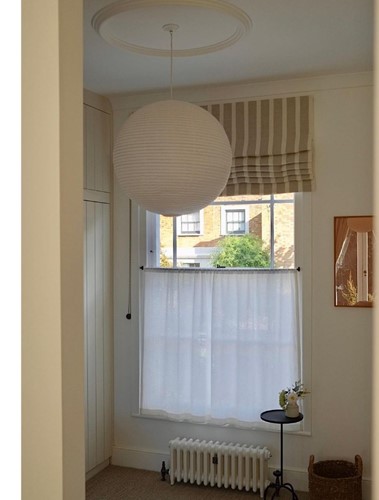Posted: Friday, December 8, 2023
Cast Iron Radiators make great additions to period homes and modern spaces. Beyond their aesthetic appeal, they are renowned for their exceptional heat retention and distribution. Determining the optimal number of radiator sections is crucial to heating a room sufficiently and ensuring a cosy, comfortable atmosphere. Whether adorning a classic Victorian home or complementing a contemporary dwelling, selecting the right size radiator is the first step in striking the balance between warmth and styling.

A BTU (British Thermal Unit) is a unit of measurement for thermal energy. It is used to calculate how much heat is needed to maintain a desirable temperature in a space. If a radiator has too low a BTU output, it may struggle to adequately heat its surroundings, while a radiator with a high BTU output may result in excessive energy consumption and discomfort.
Trads’ cast iron radiators are made out of sections that are assembled together. Dividing a room's BTU requirement by individual section output calculates the total number of radiator sections required for the room. Our BTU calculator does the hard work for you! This takes into account factors that contribute to heat loss, such as the number of windows a room has and whether or not they are double-glazed.
Larger rooms and spaces that are subjected to heat loss will require a greater number of radiator sections. The choice to create one sizeable radiator or use multiple smaller models depends on personal preference and interior design choices.
Compact Radiators
The Dutchess 4 Column stands just 330mm tall and is perfectly placed beneath bay windows. Use a greater number of sections or pair with a larger Dutchess model to increase the radiator heating capacity in open spaces.
Due to its chunky design, the Victorian 9 Column offers exceptional BTU for a lower model. Its clean lines and column design suit period properties, modern interiors and industrial settings.
Tall Models
Available in 4 heights, the tallest version of the Victorian 6 Column reaches 920mm high. Its exceptional BTU output makes it an ideal choice for large, open spaces.
Trads have a range of Anthracite Radiators made from lightweight steel measuring 1800mm in height. Painted dark grey, these stylish radiators have become a staple in modern interior design.
Decorative Radiators
Featuring an elaborate, floral design, The Daisy complements traditional houses or creates an interesting focal point in more contemporary settings. Available in 2 heights, BTU can be adjusted according to requirements.
The Tuscany model boasts a unique shape, with flowing curved lines and radiator sections that appear concave. The addition of a subtle sunburst pattern makes it a fitting choice for modern spaces.
Each section is made using a sand casting process. A mould made from sand and a binding agent is filled with high-grade molten cast iron, which solidifies to create the desired shape. Once each piece has cooled and hardened, they are fettled and rubbed down in preparation to be primed and painted. After spray painting, the sections are hand-burnished to highlight specific patterns or designs. Radiator sections are then assembled using connectors and high-quality seals, creating a continuous unit.
Visit the Trads website to discover our full range of Cast Iron Radiators and use the BTU calculator to determine the number of sections required to heat a room. For further assistance, call our helpline on 01400 263320 or email sales@tradscastironradiators.co.uk.
< Back To Blog